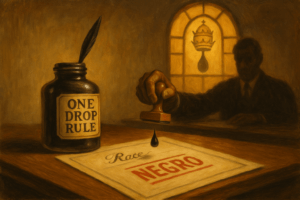In the ongoing spectacle of political theater, the Trump-Vance campaign seems to have found itself a new act. After J.D. Vance’s disparaging comment about women as “childless cat ladies,” they’ve now turned to an even more bizarre story, perhaps in an attempt to mend fences. Because, evidently, nothing says “sorry,” quite like conjuring up tales of Haitian immigrants allegedly eating the local cats in Springfield, Ohio. It’s a new low in distraction tactics, but if you’re looking to shift the narrative from a sexist faux pas, why not go full-on xenophobic? It’s a story straight out of a tabloid, but unlike most tabloid tales, this one is being peddled by a former president and his chosen running mate.
Springfield, Ohio—a town that, like many in the Rust Belt, has been grappling with population decline and economic downturn—chose an innovative approach to its challenges. Recognizing the need for revitalization, Springfield extended an invitation to Haitian immigrants to help repopulate and breathe new life into the community. It was a conscious decision to bring in new energy and diversity to a town that had seen its numbers dwindle. It is a story of hope and renewal if there ever was one.
Enter the Trump-Vance campaign, which has chosen to interpret this story not as a tale of hope or renewal but as an opportunity to stoke fears and prejudices. In their version of events, these Haitian newcomers—who, by the way, are in the U.S. legally and have been warmly received by the Springfield community—are now reportedly indulging in a spree of cat consumption. Not to be outdone in the realm of unhinged claims, Trump himself took this baseless narrative to a national stage during a debate with Kamala Harris. He repeated the lie about Haitians eating pets, dogs, and cats, even as the town’s administration and law enforcement had already begun debunking the story. This was not a case of an offhand remark; it was a calculated decision to propagate a falsehood in front of millions.
One has to wonder what the Trump-Vance campaign thought this story would achieve. Perhaps they believed that shifting the narrative to a sensationalized, fear-mongering tale would distract from the backlash against Vance’s previous remarks. Maybe they hoped it would divert attention from the fact that women—yes, even those without children or who have an affinity for cats—are a powerful voting bloc not to be dismissed with sexist tropes. Or perhaps this is simply a calculated move to rally their base with the ever-reliable tactic of scapegoating immigrants.
But here’s the thing about Springfield: this isn’t a town in need of saving from some imagined immigrant menace. It’s a town that made a deliberate choice to invite people in, to grow, and to rebuild. It’s a town where the narrative is not one of conflict but of collaboration. The only crisis here is the one manufactured by a campaign trying to distract from its own missteps. And as for the cats of Springfield? They seem to be doing just fine, much to the dismay of those who would have you believe otherwise.
In the end, the Trump-Vance campaign’s efforts to pivot from their “childless cat ladies” faux pas to this absurd story about Haitian immigrants reveal more about their own desperation than anything else. It’s a reminder that in the theater of politics, sometimes the most telling aspect of a performance is not the story being told but the lengths to which the storytellers will go to sell it. And in this case, it seems they’ve overplayed their hand. The residents of Springfield, along with the rest of us, are left to watch as the absurdity unfolds, shaking our heads and perhaps keeping a closer eye on our cats—not because of our new neighbors, but because it seems political narrative is the real predator here.








Add your first comment to this post